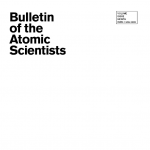Unearthing poison: Disposal of abandoned chemical weapons in China
By Wanglai Gao | November 2, 2017
For more than two decades, China and Japan have worked to eliminate the chemical weapons that Japan abandoned in China at the end of World War II. The process has involved numerous challenges, such as excavating corroded munitions that had been buried in the city of Beian along with sensitive explosives; working in the aftermath of an accident that sickened more than 40 people in Qiqihar; establishing innovative destruction technologies in Nanjing; and, at Haerbaling Mountain, embarking on the clean-up of the largest burial site for abandoned chemical weapons in China. Though bilateral tensions have sometimes strained the destruction process, Sino-Japanese cooperation has ultimately provided a useful model for nations elsewhere engaged in the disposal of abandoned chemical weapons.
Together, we make the world safer.
The Bulletin elevates expert voices above the noise. But as an independent nonprofit organization, our operations depend on the support of readers like you. Help us continue to deliver quality journalism that holds leaders accountable. Your support of our work at any level is important. In return, we promise our coverage will be understandable, influential, vigilant, solution-oriented, and fair-minded. Together we can make a difference.














